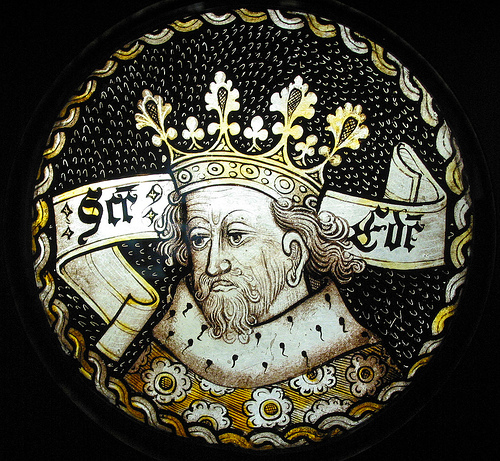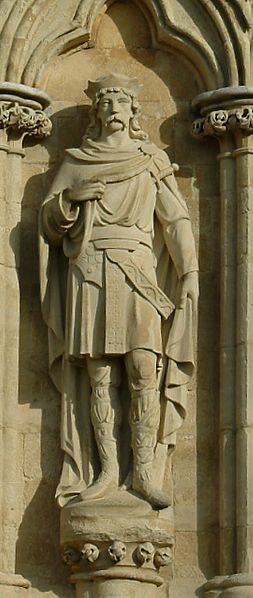St. Edmund the Martyr
King of East Anglia, born about 840; died at Hoxne, Suffolk, November 20, 870.
 The earliest and most reliable accounts represent St. Edmund as descended from the preceding kings of East Anglia, though, according to later legends, he was born at Nuremberg (Germany), son to an otherwise unknown King Alcmund of Saxony. Though only about fifteen years old when crowned in 855, Edmund showed himself a model ruler from the first, anxious to treat all with equal justice, and closing his ears to flatterers and untrustworthy informers. In his eagerness for prayer he retired for a year to his royal tower at Hunstanton and learned the whole Psalter by heart, in order that he might afterwards recite it regularly.
The earliest and most reliable accounts represent St. Edmund as descended from the preceding kings of East Anglia, though, according to later legends, he was born at Nuremberg (Germany), son to an otherwise unknown King Alcmund of Saxony. Though only about fifteen years old when crowned in 855, Edmund showed himself a model ruler from the first, anxious to treat all with equal justice, and closing his ears to flatterers and untrustworthy informers. In his eagerness for prayer he retired for a year to his royal tower at Hunstanton and learned the whole Psalter by heart, in order that he might afterwards recite it regularly.
In 870 he bravely repulsed the two Danish chiefs Hinguar and Hubba who had invaded his dominions. They soon returned with overwhelming numbers, and pressed terms upon him which as a Christian he felt bound to refuse. In his desire to avert a fruitless massacre, he disbanded his troops and himself retired towards Framlingham; on the way he fell into the hands of the invaders. Having loaded him with chains, his captors conducted him to Hinguar, whose impious demands he again rejected, declaring his religion dearer to him than his life.
A statue of St. Edmund the Martyr on the West Front of Salisbury Cathedral, UK.
His martyrdom took place in 870 at Hoxne in Suffolk. After beating him with cudgels, the Danes tied him to a tree, and cruelly tore his flesh with whips. Throughout these tortures Edmund continued to call upon the name of Jesus, until at last, exasperated by his constancy, his enemies began to discharge arrows at him.
This cruel sport was continued until his body had the appearance of a porcupine, when Hinguar commanded his head to be struck off. From his first burial-place at Hoxne his relics were removed in the tenth century to Beodricsworth, since called St. Edmundsbury, where arose the famous abbey of that name. His feast is observed November 20, and he is represented in Christian art with sword and arrow, the instruments of his torture.
G. E. PHILLIPS (Catholic Encyclopedia)



Let's all pray for St. Edmund that he may guide the people to the right path.
ReplyDeleteLet us pray for all the Christians in muslim held countries as they are persecuted like St Edmund, my birthday is 19 November and he is my patron Saint. Edmund J Raymond
ReplyDelete